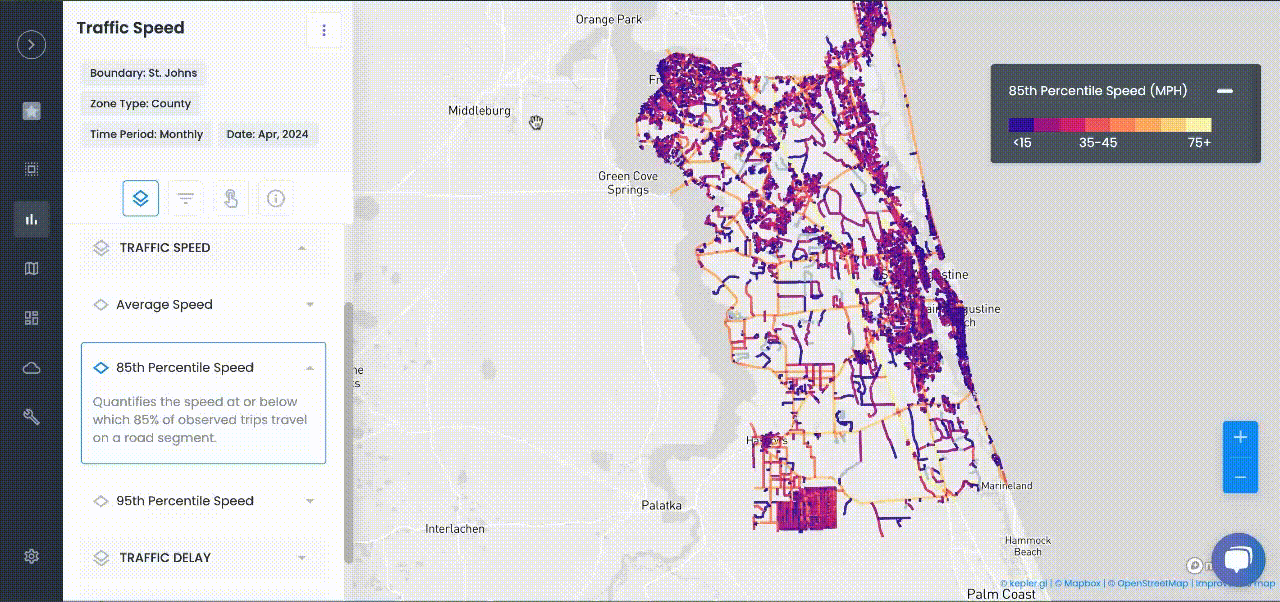
Transportation Planning
AI Solutions for Local Governments in 2025: Building Smarter, Safer, and More Connected Cities
How AI is powering smarter cities and transforming urban governance
Every year, AI is powering more smarter cities and transforming urban governance.
Urban populations are growing fast, and with that growth comes new challenges — more traffic, greater demand for services, and higher expectations from citizens. AI gives local governments the tools to manage these demands efficiently.
By using AI to process large volumes of data, cities can make better decisions. Whether it’s predicting traffic jams or planning public transport routes, AI helps local leaders act before problems grow. For instance, predictive analytics can highlight traffic congestion based on data from sensors and cameras, letting officials adjust traffic flow before gridlock occurs.
AI is also improving how cities manage public services. Smart chatbots can answer common questions from residents, saving time for human staff. AI can optimize energy use in public buildings, improve waste collection schedules, and monitor air and water quality in real-time. This means faster services, lower costs, and a better experience for everyone.

AI for Public Safety: Smarter Surveillance, Faster Emergency Response, Safer Streets
Keeping cities safe is a top priority — and AI is making that easier and faster. AI-powered surveillance systems can monitor public areas 24/7. These systems recognize patterns, detect unusual behavior, and alert emergency teams immediately if something seems wrong.
AI also improves emergency response. It can analyze data from weather, sensors, and previous incidents to predict events like floods or fires. This allows authorities to send warnings early and prepare rescue teams before disaster strikes.
Law enforcement agencies are also using AI for crime prevention. Predictive policing tools look at crime data to find hotspots and deploy patrols accordingly. AI can even help analyze video footage, review evidence, and assist in identifying suspects — helping investigators solve cases faster. The result? Safer neighborhoods and quicker responses when emergencies happen.
Top AI Technologies Reshaping Local Government Operations in 2025
Several AI tools are behind the transformation we’re seeing in city governance:
- Machine Learning (ML): These AI models learn from data to spot patterns and make predictions. For example, ML can adjust traffic signals based on real-time congestion levels.
- Natural Language Processing (NLP): This tech allows machines to understand and respond to human language. Chatbots using NLP can answer citizen questions instantly, 24/7.
- Computer Vision: This lets AI “see” and analyze images or video. Cities use it for traffic monitoring, checking road conditions, or scanning crowds for safety threats.
Together, these tools help governments make faster, more informed decisions, while improving the way people interact with city services.
Real-World Examples: How Cities Are Using AI to Improve Public Services
Many cities are already using AI with great success:
- Barcelona: The city employs AI to manage its public transport system by predicting passenger demand and optimizing bus and train schedules. This approach has led to a 10% increase in on-time performance and a 15% reduction in passenger wait times.
- Singapore: Through its Smart Nation initiative, Singapore utilizes AI for real-time traffic monitoring and management. Traffic cameras and IoT sensors provide data that AI algorithms analyze to optimize traffic light timings, effectively reducing congestion and improving urban mobility.
- San Francisco: The city's police department has implemented predictive policing algorithms to analyze crime data, enabling more effective resource allocation and proactive crime prevention. This AI-driven approach has enhanced law enforcement efficiency and contributed to community safety.
These cities are showing what’s possible when governments invest in AI — better services, smoother traffic, and safer communities.
Risks and Challenges of AI in Local Government: Data, Privacy, and Bias
While the benefits of AI are clear, it’s important to address the risks and challenges too:
- Data Quality: AI relies on accurate data. If data is missing or outdated, AI systems can make poor decisions.
- Privacy Concerns: AI systems often use sensitive data, like video footage or personal info. Governments must ensure that this data is secure and used responsibly.
- Bias in AI: If historical data contains bias, AI can repeat and even amplify it. For example, biased data in crime reports could lead to unfair policing in certain areas.
To avoid these issues, local governments need strong data governance policies, regular audits, and community oversight. Our AI Traffic Analytics Software for Smart Cities and Law Enforcement is built to support responsible, real-time decision-making while maintaining transparency, fairness, and data security.
Responsible AI is just as important as innovative AI. By focusing on ethical implementation, cities can build trust and deliver smarter, safer public services.
AI in Urban Planning: Smarter Infrastructure and Sustainable City Development
AI is helping cities plan better — not just react. With the right data, AI can guide where to build schools, parks, and housing based on future population growth or environmental factors.
It also helps cities go green. AI systems track how much energy is used, how much waste is produced, and where emissions are coming from. This allows cities to reduce their carbon footprint and improve sustainability.
Future urban planning could involve smart buildings that adjust lighting and temperature automatically or self-healing infrastructure that uses AI to detect cracks and signal maintenance crews before failures occur.
Engaging Citizens in AI-Driven Governance: Why Community Involvement Matters
For AI to truly succeed in local governance, it must serve the people. That means involving residents in how it’s developed and used.
Cities should host workshops, gather feedback, and be transparent about what AI tools are being used and why. When people understand how AI works and how it benefits them, they’re more likely to support its adoption.
Community input also helps governments catch blind spots — whether it’s a privacy concern or a local need the AI might miss.
Policy Strategies for Responsible AI Adoption by Local Governments
To use AI effectively, local governments should consider these key policy recommendations:
- Set Clear Data Standards: Data used in AI systems must be accurate, up-to-date, and free from bias.
- Protect Privacy and Security: Strong safeguards are essential to keep citizen data safe.
- Ensure Transparency: Let the public know how AI is being used and how decisions are made.
- Train Staff and Educate the Public: Government teams should receive AI training. Citizens should also have access to simple explanations and learning resources.
These strategies ensure AI is used in ways that are fair, secure, and aligned with community values.
The Path Forward for Smarter, Safer, AI-Powered Cities
AI has the power to reshape local governance — improving everything from how we move around the city to how safe we feel in our neighborhoods. With smarter traffic systems, faster emergency responses, and better infrastructure planning, the benefits are wide-reaching.
But with that power comes responsibility. Cities must build trust through transparency, include the community in decision-making, and make sure AI tools are fair and safe.
The journey toward smarter cities is just beginning. With thoughtful planning and responsible innovation — and with Urban SDK’s Geospatial AI solutions for cities — we can create urban environments that are not just efficient but truly livable.

TRAFFIC ENFORCEMENT FEATURES
80% of citizen complaints
are a perception problem
Urban SDK provides precise hourly speed data to evaluate complaints and deploy resources efficiently for the greatest impact to public safety.
Urban SDK provides precise hourly speed data to evaluate complaints and deploy resources efficiently for the greatest impact to public safety.
Target Speeding
Identify hot spots, validate monthly speeding trends and monitor vulnerable areas like school zones.
Improve Safety
Crash and citations location information to compare speed trends month over month
Fast Response
Respond to citizen complaints sooner with address search and exportable reporting
Deploy Assets
Generate maps for traffic enforcement by time of day, location or division to deploy officers to known problem areas.
RESOURCES
Customer Success
See how public sector leaders succeed with Urban SDK.
WEBINAR
Identify speeding and proactively enforce issues
See just how quick and easy it is to identify speeding, address complaints, and deploy officers.







